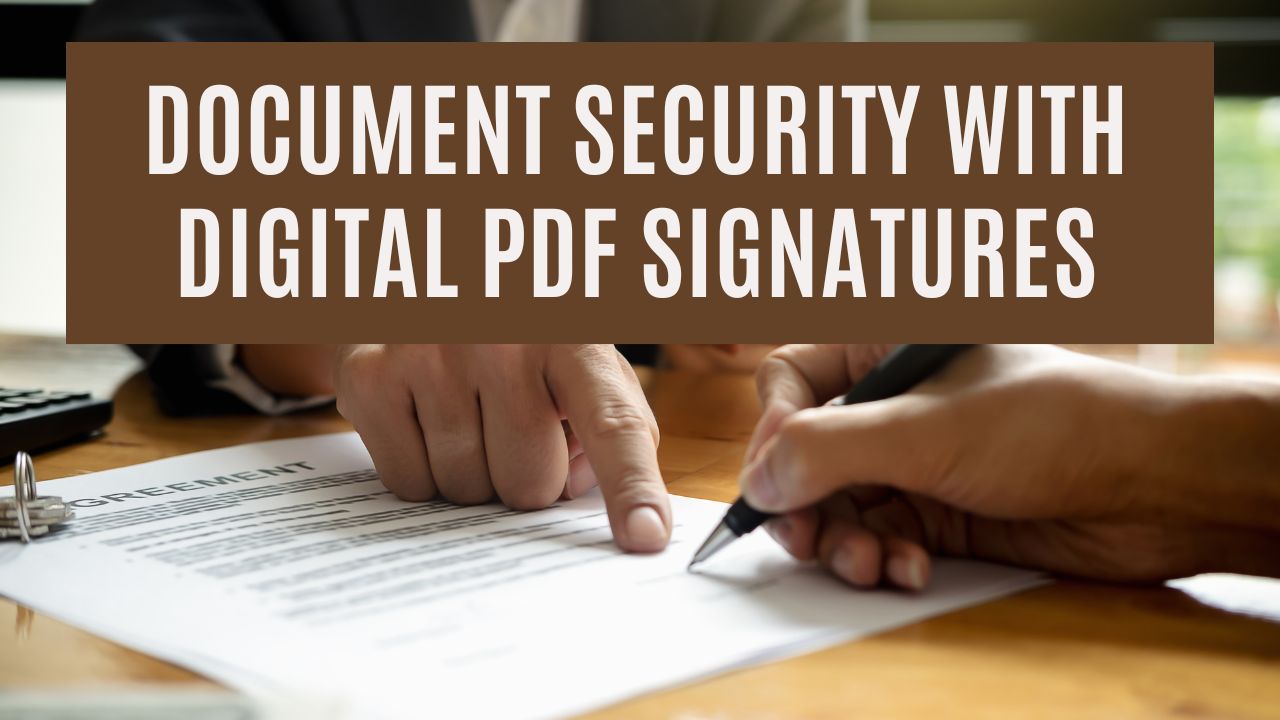In our digitally driven world, securing documents has become increasingly crucial. Digital PDF signatures provide a solid method for ensuring the safety and authenticity of electronic documents. This guide delves into the role of digital PDF signatures in enhancing document security, their advantages, and the best practices for their use.
Understanding Digital PDF Signatures
A digital PDF signature is a sophisticated form of electronic signature that uses cryptographic technology to verify a document’s authenticity and integrity. Unlike simple electronic signatures, which might just be a scanned image of a handwritten signature, digital signatures use encryption and a digital certificate from a trusted Certificate Authority (CA) to offer higher security.
How Digital PDF Signatures Enhance Security
Integrity Verification
Digital signatures make sure that a document hasn’t been tampered with
since it was signed. They do this through a process called hashing, which creates a unique digital fingerprint of the document. If anyone alters the document, the hash value changes, thus invalidating the signature.
Authentication
These signatures use a digital certificate to confirm the signer’s identity. This certificate, provided by a CA, links the signer’s identity to their public key. When a document is signed, the signer’s private key creates the signature, which the recipient can verify using the public key.
Non-repudiation
Non-repudiation means that once a document is signed, the signer can’t deny having signed it. Digital signatures provide strong evidence of the signer’s identity and intent, making it hard for signers to disavow their signatures.
Encryption
Often, digital signatures also involve encrypting the document or the signature itself, adding an extra layer of security. This encryption ensures that unauthorized parties can’t access the document’s content during transmission or storage.
Benefits of Using Digital PDF Signatures
Enhanced Security
When you sign pdf online Digital signatures offer better security compared to traditional paper signatures and simple electronic ones. Cryptographic technology protects documents from tampering and forgery.
Legal Compliance
Digital signatures comply with various international legal frameworks like the ESIGN Act and UETA in the U.S., eIDAS regulation in the EU, and the UNCITRAL Model Law on Electronic Signatures. This compliance makes digital signatures legally binding and admissible in court.
Efficiency and Cost Savings
Digital signatures remove the need for printing, signing, scanning, and mailing physical documents. This streamlines workflows cuts costs, and speeds up business processes.
Environmental Impact
By reducing the reliance on paper, digital signatures contribute to environmental sustainability, helping businesses reduce their carbon footprint and promote green practices.
Best Practices for Implementing Digital PDF Signatures
Choose a Reputable Provider
Pick a digital signature provider such as Signeasy with strong security features that meet legal standards. Ensure the provider is recognized by reputable Certificate Authorities.
Train Your Team
Educate your employees on using digital signature tools effectively. Make sure they understand the importance of document security and the correct procedures for signing and verifying documents.
Implement Multi-Factor Authentication (MFA)
Enhance security by requiring MFA to sign documents. This adds extra protection by verifying the user’s identity through additional means like a mobile app or email verification.
Use Strong Encryption
Ensure that the digital signature tool uses strong encryption methods to protect documents during transmission and storage. Look for tools that comply with industry standards for encryption, such as AES-256.
Regularly Update Software
Keep your digital signature software up to date to protect against vulnerabilities and comply with the latest security standards. Regular updates prevent security breaches and maintain the integrity of your digital signatures.
Maintain Secure Storage
Store signed documents securely to protect them from unauthorized access. Use encrypted storage solutions and implement access controls to ensure that only authorized personnel can access sensitive documents.
Conclusion
Digital PDF signatures offer a powerful means to secure documents in today’s digital landscape. They ensure the integrity, authenticity, and non-repudiation of electronic documents, providing a secure and efficient alternative to traditional signatures. Businesses can use free PDF signature and enjoy increased security, legal compliance, cost savings, and environmental benefits. By following best practices and choosing the right tools, organizations can confidently implement digital signatures to protect their valuable documents and streamline their workflows.





